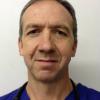If you’ve developed spider veins, (also known as thread veins, or ‘teleangiectasia’ varicose veins), on the chest, back, and shoulders, or have broken blood vessels in the face, it may be time to get your liver checked out. These tiny, but visible veins may be a symptom of non-alcoholic fatty liver disease (NAFLD).
Spider veins are caused when fat builds up in the liver from fatty liver disease, and blood flows sluggishly or clots, which impacts blood pressure.
Non-alcoholic fatty liver disease (NAFLD) is the term for a range of conditions caused by a build-up of fat in the liver. It's usually seen in people who are overweight or obese.
The lockdown has meant more people are eating more and moving less, putting them at risk of the condition. The British Liver Trust has already warned of a potential future surge in fatty liver disease due to an increase in sedentary lifestyle.
The exact causes of NAFLD aren’t well understood, athough machine learning is now starting to help us understand the molecular process. There appears to be a connection between the disease and insulin resistance.
Broken veins are a surprising symptom, however for some there will be no sign that this problem is occurring.
Other symptoms of non-alcoholic fatty liver disease include:
- Tiredness
- Yellowing of the skin and eyes
- Swollen glands
- Discolouration in the neck
- Swelling in the belly
- Pain in the upper right side of the abdomen
A healthy liver should contain little or no fat. It's estimated up to 1 in every 3 people in the UK has early stages of NAFLD, where there are small amounts of fat in their liver.
Left untreated, NAFLD can lead to an increase in non-alcohol related fatty liver disease (NAFLD) and its more serious form, non-alcohol related steatohepatitis (NASH).
It is estimated that one in three people in the UK have early-stage NAFLD. About one in five of those will go on to develop NASH, which is soon expected to be the primary reason for liver transplants in the UK.
How is non-alcoholic fatty liver disease diagnosed?
- Blood liver tests for abnormalities
- The Latest NASH test liver technology presents noninvasive diagnostic using blood samples and artificial intelligence with accuracy equivalent to biopsy
- Ultrasound, CT scanning can detect fat
- Elimination of other conditions
- Diagnosis can be confirmed by liver biopsy.
Having high levels of fat in your liver is also associated with an increased risk of serious health problems, such as diabetes, heart, high blood pressure and kidney disease.
Who is at risk of developing non-alcoholic fatty liver disease?
- Obesity, especially if you are carrying fat around the waist
- Those who are diabetic (type 2)
- People with high blood pressure
- Those who have high cholesterol
- Anyone diagnosed with Metabolic syndrome
- People over the age of 50
- Smokers
Can non-alcoholic fatty liver disease be treated
There's currently no specific medication for the condition. However, weight loss is recommended to manage and control NAFLD. You can also treat the specific symptoms that the condition triggers, including spider veins.
Professor Stephen Black of the UK Vein Clinic comments: ‘When we treat thread veins in the legs and elsewhere, we use form of 'thermal coagulation', where a precisely targeted source of heat is used to seal, collapse, and gently remove your thread veins. It’s highly effective, and delivers far better outcomes than laser treatments (which risk discolouring or damaging your skin), along with Micro Sclerotherapy where we gently and permanently remove unhealthy veins by injection.’
Read more ...
- Why it's important to treat varicose veins
- Diagnosing and treating varicose veins accurately
- 7 dangers of sitting down too long








